Tsukune are a uniquely Japanese take on meatballs, fitting perfectly into the country’s rich and varied culinary tradition. As these chicken meatballs become more popular, it is important to understand what makes them special and how to prepare them properly.
What Are Tsukune?
Tsukune are more than simple chicken meatballs. The term refers to a broad range of Japanese-style meatballs that can be made with pork, fish, or even beef. Still, the chicken version is the most common, so much so that it has become almost synonymous with tsukune themselves.
The Importance of Choosing the Right Meat
Choosing chicken thigh is no accident. Its higher fat content keeps the meatballs moist and juicy. You can use chicken breast, but the result will be noticeably drier.
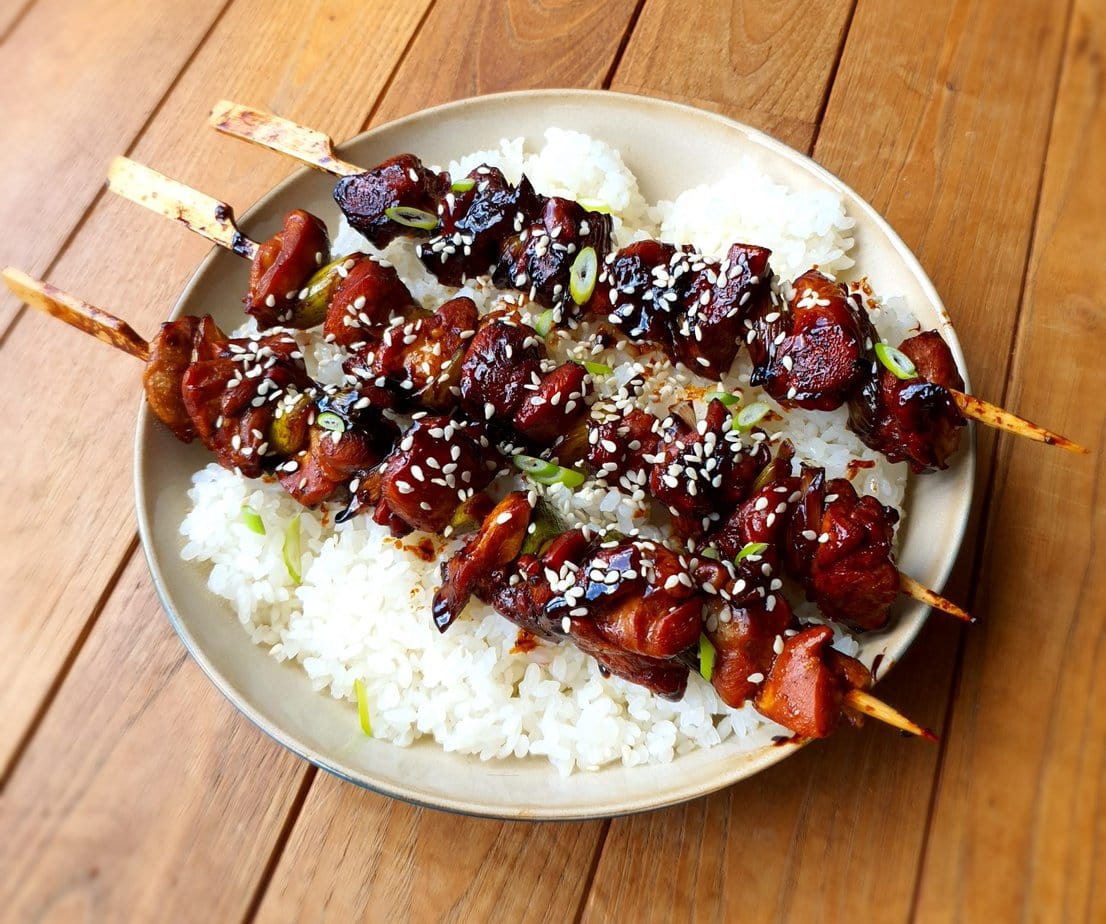
Preparation and Cooking
Shaping and Chilling
After mixing and shaping the tsukune, chill them. The cold firms up the meatballs, making them easier to handle and grill later. This step helps them keep their shape and texture when they meet the intense heat of the grill.
The Art of Yakitori
Tsukune occupy a special place among the many kinds of yakitori, the grilled skewers that are a staple of Japanese street food. Threaded onto skewers and grilled, the meatballs are usually brushed with tare, a sweet soy-based sauce that caramelises over the coals and delivers a burst of flavor.
Skewering Tips
Traditionally, the ‘teppo gushi’ (鉄砲串), a flat skewer with a handle, is preferred because it keeps the meatballs from twisting while they cook. If, like me, you only have standard round skewers, use two side by side. This simple trick stops the tsukune from spinning, ensuring even cooking and better control.

Tsukune vs. Tsumire
There is another kind of meatball called ‘tsumire’ (つみれ), made from minced meat but most often fish. Sardine tsumire are especially popular in Oden (Japanese hot-pot). Contrary to popular belief, however, tsumire are not exclusively made from fish.
The main difference between tsukune and tsumire is how the meatballs are formed. Tsukune are hand-shaped into balls or small sausages, whereas tsumire are made by dropping the seasoned mixture straight into boiling water or soup without shaping it first.
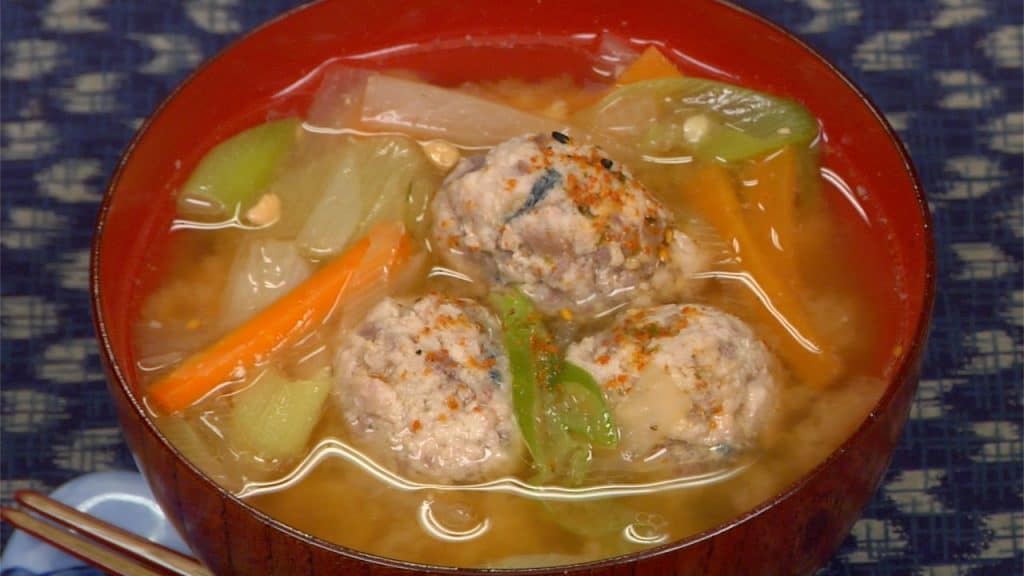
Tare Sauce
Tare sauce, based on soy sauce, mirin, and sugar, is more than a condiment. It is highly personal, letting every cook tailor the glaze to their own taste.
The sauce is brushed on generously during grilling, creating a rich, caramelised layer that defines the dish’s flavor profile. Yakitori sauces actually refer to a whole variety of sauces for grilling; there are no set rules, and it is hard to square that fact with SEO, which would prefer a single article on the topic, but hey… as long as it tastes good.
The Main Ingredients of Tsukune
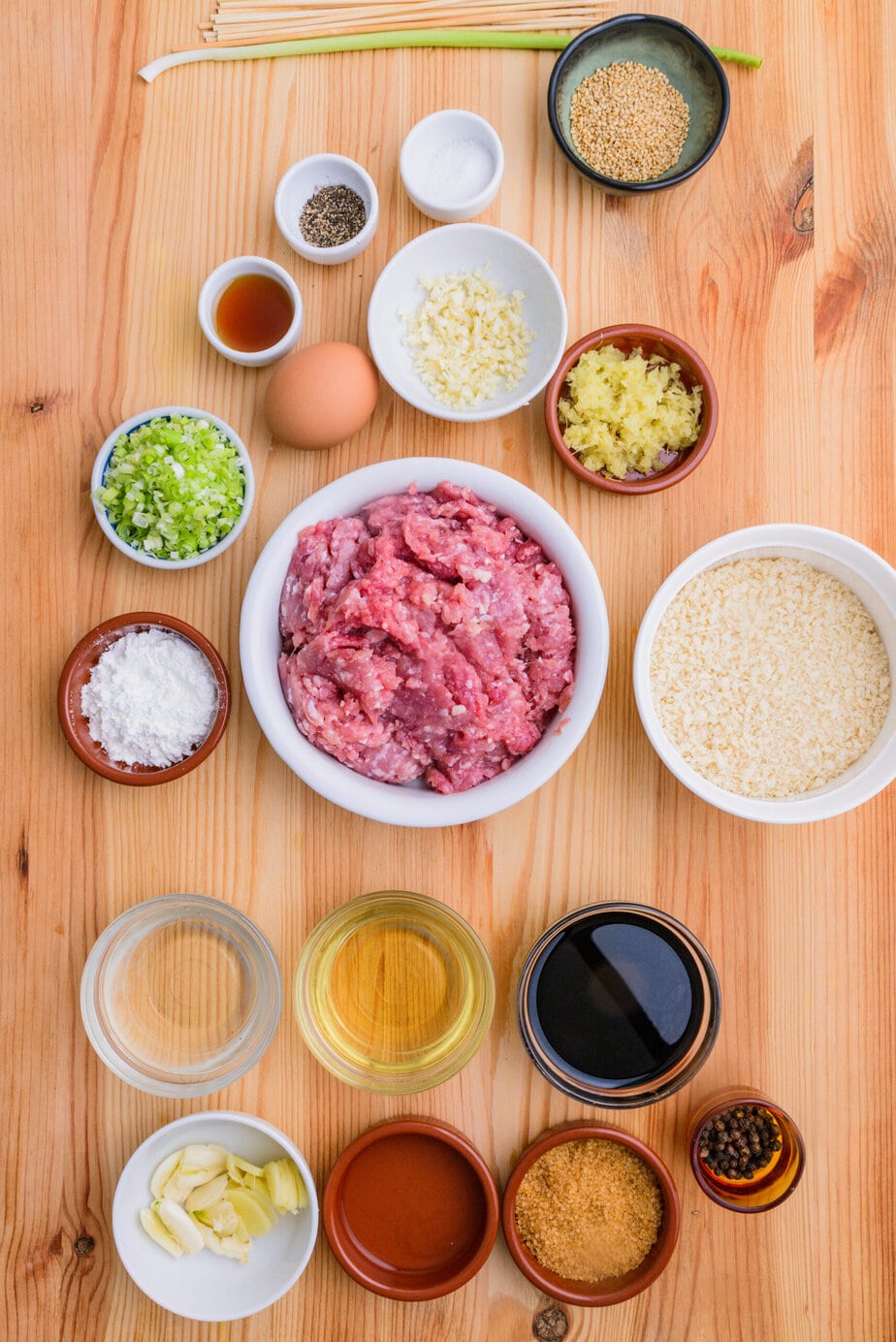
Sauce
- Soy sauce (such as Kikkoman): A cornerstone of Japanese cooking, soy sauce brings salty umami depth. It forms the base of the tare, uniting the other flavors. You can use tamari sauce as an alternative.
- Mirin: A sweet rice wine that lends gentle sweetness and a hint of alcohol, which cooks off to leave a rich aroma.
- Sake: Japanese rice wine that adds light acidity and fruity notes, deepening the sauce’s flavor.
- Brown sugar: Provides caramel sweetness that balances the saltiness of the soy sauce and the acidity of the vinegar while giving the sauce a warm amber color.
- Rice vinegar: Its mild acidity lifts the sweet and umami notes, adding a subtle freshness.
- Garlic, peeled and crushed: Adds a pungent depth that pairs well with ginger.
- Ginger, sliced: Contributes gentle heat and a lemony freshness that complements the soy and garlic.
- Whole black peppercorns: Impart a woody warmth; left whole, they infuse the sauce without overpowering it.
Meatballs
- Boneless, minced chicken thigh: Valued for its rich flavor and natural fat, which keep the meatballs juicy.
- Panko breadcrumbs: Lighter than regular breadcrumbs, they give the meatballs an airy texture and help lock in moisture.
- Fresh grated ginger: Adds bright, spicy notes that balance the richness of the chicken and sesame oil.
- Sesame oil: Provides a toasty aroma and depth, enhancing the dish’s umami elements.
Garnish
- Spring onions, finely sliced: Offer a splash of color and a mild sharpness that contrasts with the glazed meatballs.
- White sesame seeds: Add delicate crunch and a nutty finish.
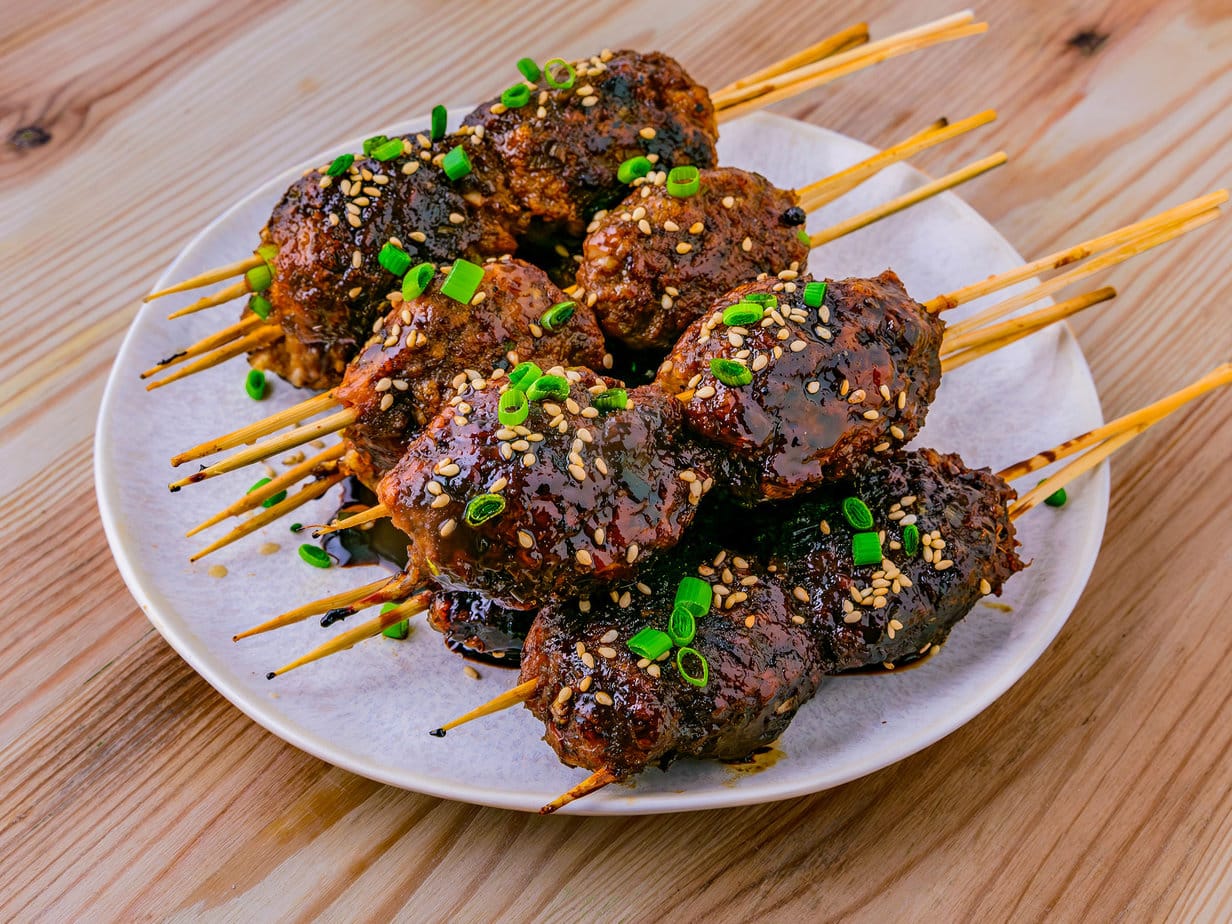
Tsukune – Japanese Chicken Skewers
Equipment
- 10 pics à brochettes en bambou de préférence, et trempés dans l'eau 30 min
Ingredients
Yakitori Sauce
- 120 ml soy sauce Japanese, such as Kikkoman
- 120 ml mirin
- 60 ml sake
- 40 g brown sugar
- 15 ml rice vinegar
- 4 cloves garlic peeled and crushed
- 1 2.5cm piece of ginger sliced
- 0.5 tablespoon black peppercorns whole
Meatballs
- 650 g boneless chicken thighs boneless and minced
- 40 g panko breadcrumbs
- 2 teaspoons cornstarch
- 2 spring onions finely sliced
- 1 egg lightly beaten
- 2 teaspoons fresh ginger grated
- 4 cloves garlic minced
- 2 teaspoons sesame oil
- 1 teaspoon salt
- 0.5 teaspoon black pepper
Instructions
For the homemade yakitori sauce
- Combine the sauce ingredients in a saucepan.
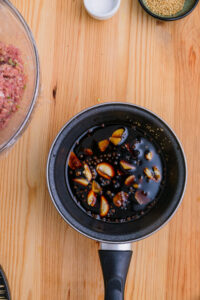
- Bring to a boil over high heat, then reduce to low.

- Cook until the mixture is thick and syrupy, about 25 minutes.
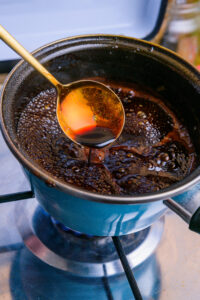
- Let cool for 10 minutes, then strain through a fine sieve. Set aside or store in an airtight container until needed.
For the meatballs
- In a large bowl, mix all the meatball ingredients until you get a uniform paste.

- Cover the bowl with plastic wrap and refrigerate for at least 15 minutes, up to overnight.
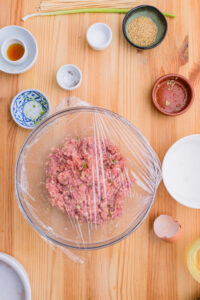
- With wet hands, shape the mixture into slightly oval meatballs about 4 cm long. Thread 2 to 3 meatballs onto each skewer.
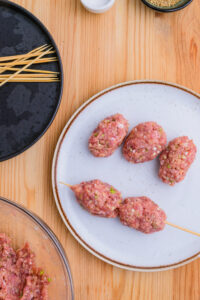
- Heat a skillet over high heat. Once hot, oil it well and place the skewers a few centimetres apart. Cook until the first side is nicely browned and the meat releases easily from the grill, about 3–4 minutes.

- Using tongs and a thin spatula, gently turn the meatballs and cook until well browned on the other side, about 3 minutes. Brush generously with sauce and cook 15–30 seconds more, until browned and caramelised in spots.

- Transfer the skewers to a plate and brush again with the sauce until the meatballs are well glazed.
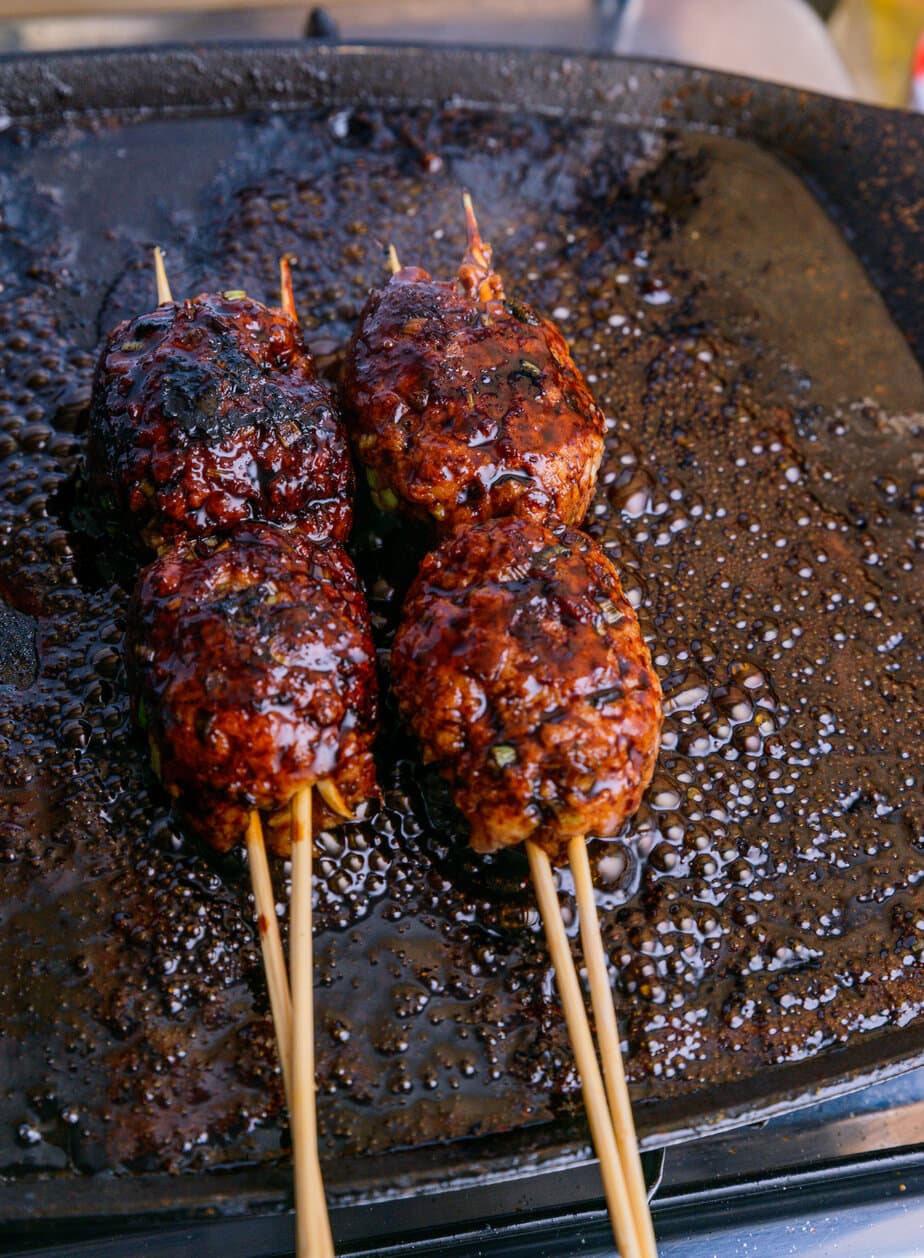
- To serve, garnish with spring onions and white sesame seeds

